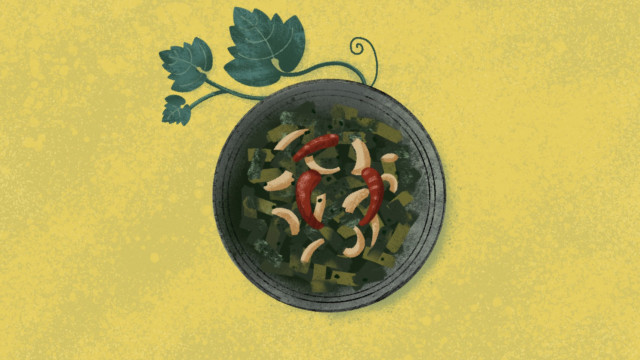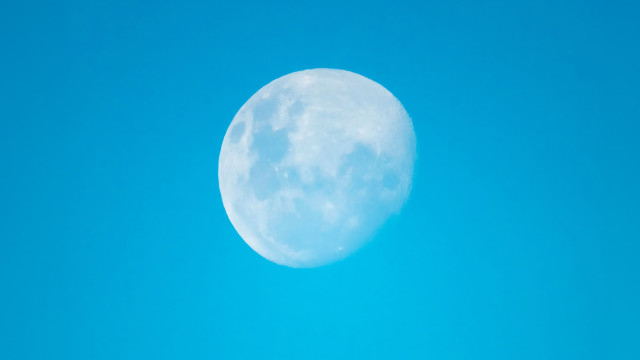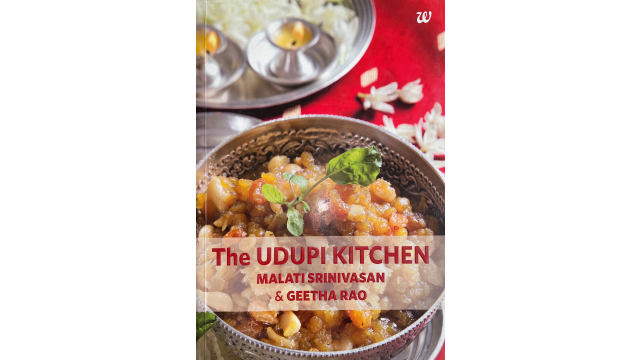Roselle, a Backyard Superfood

The many benefits of roselle, or Hibiscus sabdariffa, make it an increasingly inevitable presence in many dishes and beverages around the world, but the deep red flower has always been a mainstay of my culinary heritage. Nearly every home in Manipur — the state where I’m from in India’s Northeast region — has roselle plants in the yard. They are easy to grow, need little care, and are integral to our diet.
I most strongly associate roselle, locally known as anthuk or sougri, with my maternal grandmother — Pipi in the dialect spoken by my Paite community. I never lived under the same roof as Pipi, but my home in Imphal, the state capital, was close enough. Whenever she made something special, I could easily dash across to her kitchen to dig right in.
My favorite pastime though, was trailing behind her in the garden. My grandfather had converted the front yard of their home into a kitchen garden for his wife with the green thumb. She loved nothing better than pottering around among the herbs, vegetables, and greens of her own patch.
I can see Pipi standing in the kitchen garden, dwarfed by the tall roselles. She loved the plant and used it in many inventive ways. She saw my interest and inclination towards food and cooking even then, picking me out from all her grandchildren to help her. “Come, I’ll show you something,” she would say, luring me with the promise that I would love what she was about to make.
But then, I too was curious, and naturally intrigued by the plant’s edible, deep red flowers. We spent many winter afternoons inspecting roselles and plucking the full bloom off some of them. When I playfully shred flowers off some stalk at random, she stopped me. “Look for the deep red ones and pluck them gently,” she cautioned.
Picking roselle
Sometimes, I was tempted to pick those that had fallen on the ground at night. Even here, she directed me to be choosy. “Pick only those that still have a robust look, not the wilted ones,” she would say.
After we had collected a tray full of flowers, we soaked them in water to remove any dust, dirt, or invisible insects. Then, we separated the green seed pods inside the fruit from the red whorl of flowers. Pipi made jars of roselle jam, which we ate with bread for breakfast or sometimes in the afternoon to cure a craving for something sweet. The process was simple: boiling the flowers in sugar water on low heat until it thickened to a particular consistency. But it called for patience, as it had to be stirred constantly. I lacked that virtue then, but have plenty now.
Roselle leaves found their way into our kitchen, too, as a healing food. My mother hurriedly prepared a dish with the leaves as a gut cleanser when us kids had been on an eating binge. When someone came down with a fever and needed a wholesome soup with rice, roselle leaves were a necessary ingredient. My mother would not shred the leaves, but dunked them whole into a pan with hot, salted boiling water, which was already bubbling with sliced tomatoes, sliced green chiles, garlic, dried fish, and sometimes, thinly sliced potatoes.
As soon as the leaves were added she turned off the flame, letting them steep briefly as prolonged cooking robs them of their flavor. The soup, called kangsoi, combines the wholesome embrace of tomato and garlic with the slight tang of roselle.
People from northeastern India turn to this plant for comfort, wherever they are. In October, the season for harvesting roselle in Manipur, the leaves are plucked and dried and wrapped in paper. Students or working professionals take these with them to India’s bigger cities, to recreate the taste of home away from home.
When I moved far away, to India’s national capital region, I also found my way back to roselle. Wandering in the by-lanes of Munirka, a Delhi colony that is home to hundreds of students and professionals from the Northeast region, I found pokey shops selling dried roselle leaves, validating how are important they are to our diet.
Antioxidant benefits
Eventually, when I bought a patch of land to experiment with farming, I lugged a few roselle saplings from Manipur and planted them. I thought about how my journey reflected my Pipi’s. She was Hmar, a different tribe, but she fell in love with my grandfather and travelled some two hundred kilometers from the village of Parbung, in the interior of Manipur, to Imphal, so that they could start a life together. The garden he made for her flourished, and I’m happy to report that my plants too yield enough leaves for my comfort food.
Today, New Age wellness companies call roselle a wonder leaf for its health benefits. Entrepreneurs in Manipur and elsewhere use the dried flower to make a tea that is said to manage blood pressure, cholesterol and more. Growing up, we simply accepted that the produce we lived alongside in the hills and mountains was healing and in harmony with our own bodies. Pipi’s medicine chest owed much to her kitchen produce. Even back then, she would say that roselle was an antioxidant, an antibacterial and had healing capabilities.
When Pipi passed away three decades ago, the tradition of making roselle and other kinds of jams at home ended with her. Today, most of my family members lead busy lives and buy jams off supermarket shelves, relegating the lingering taste of Pipi’s roselle jams to the past. Yet even now, the whiff of the fruit and its flavor bring my grandmother back to me. As autumn winds bring a nip to the air, I sip my roselle-infused tea slowly, allowing memories of my Pipi to warm my heart.
- Roselle: a healing herb for India’s tribes.
- Roselle is versatile for culinary purposes.
- It has healing and medicinal qualities.









